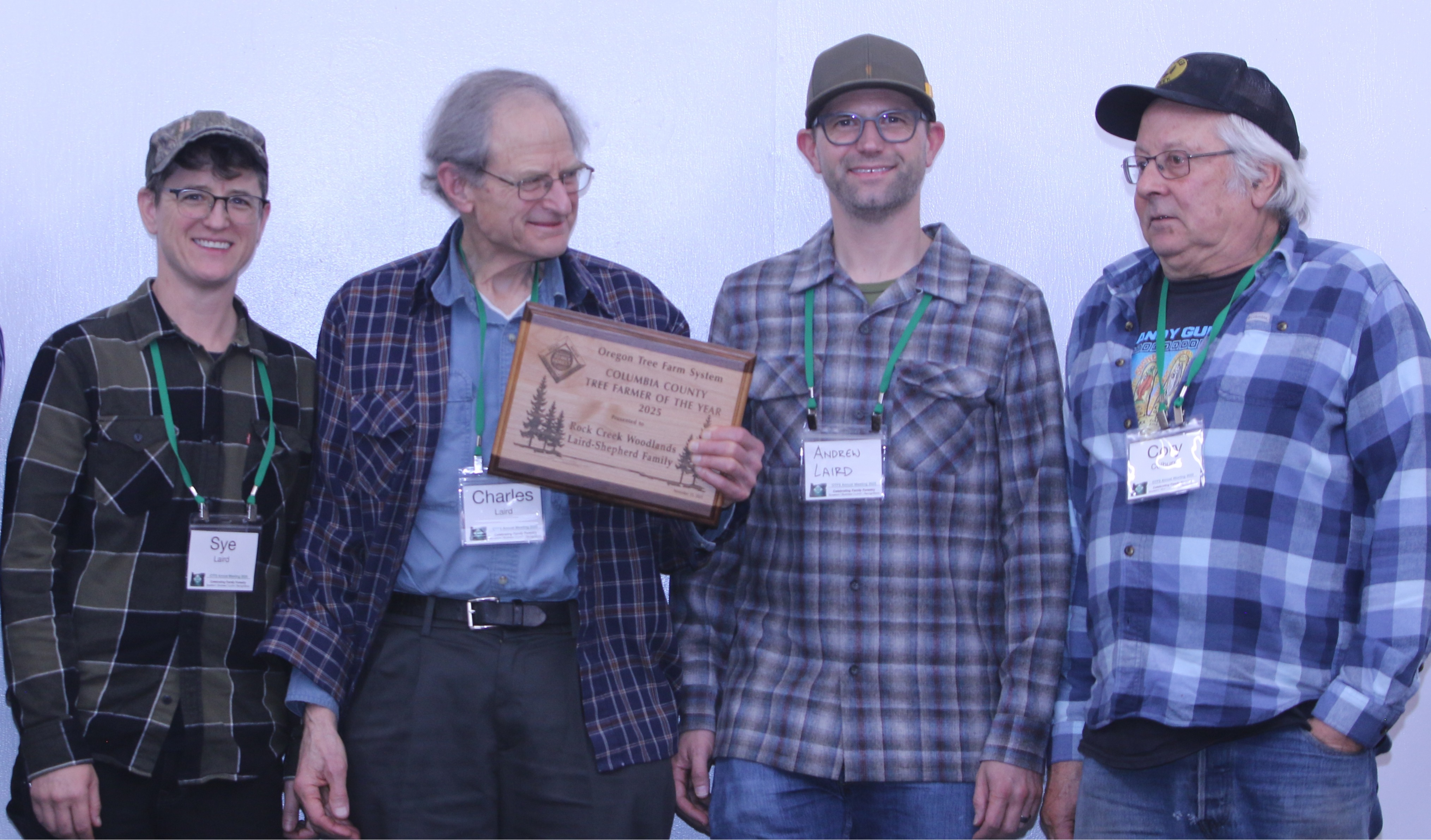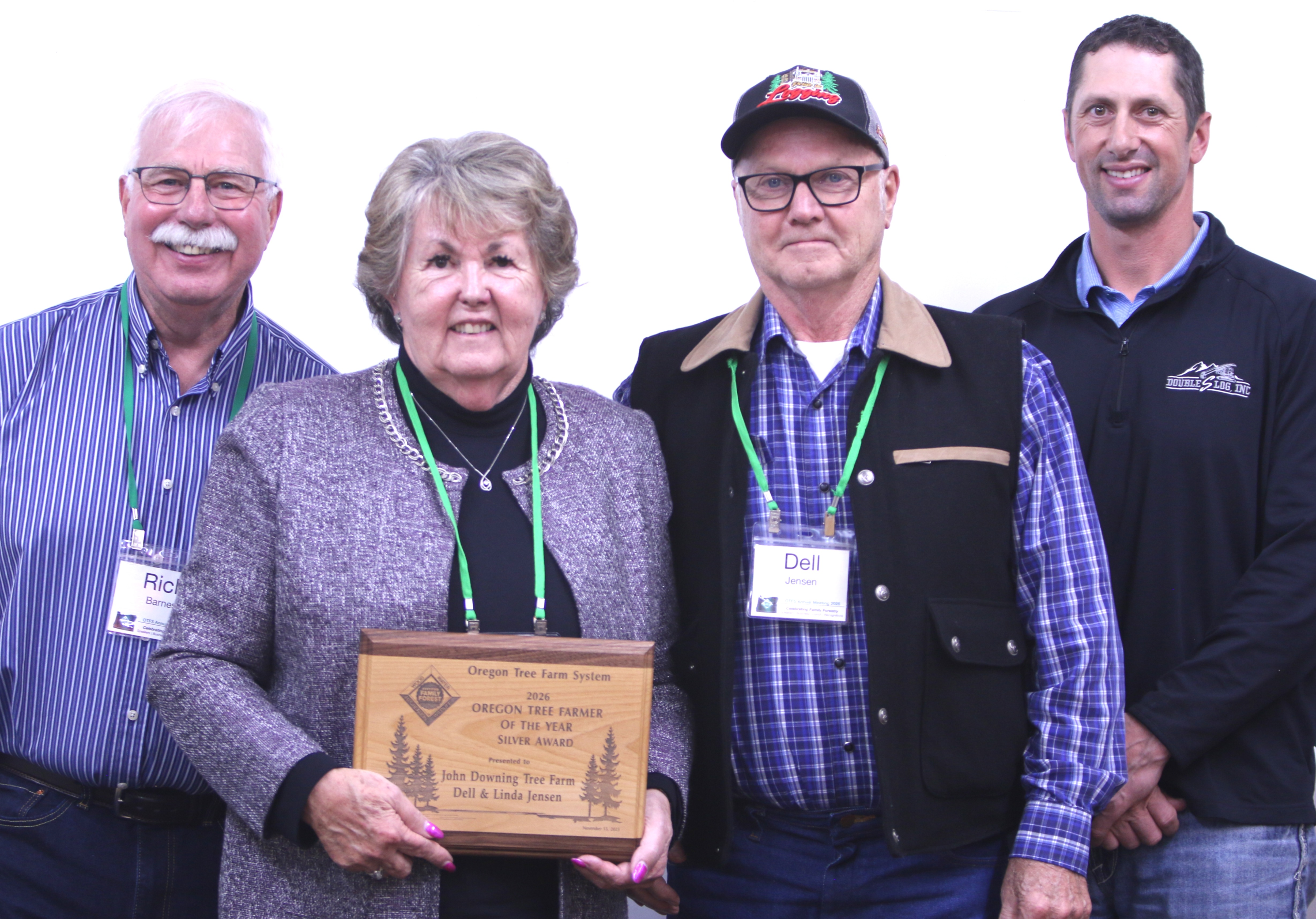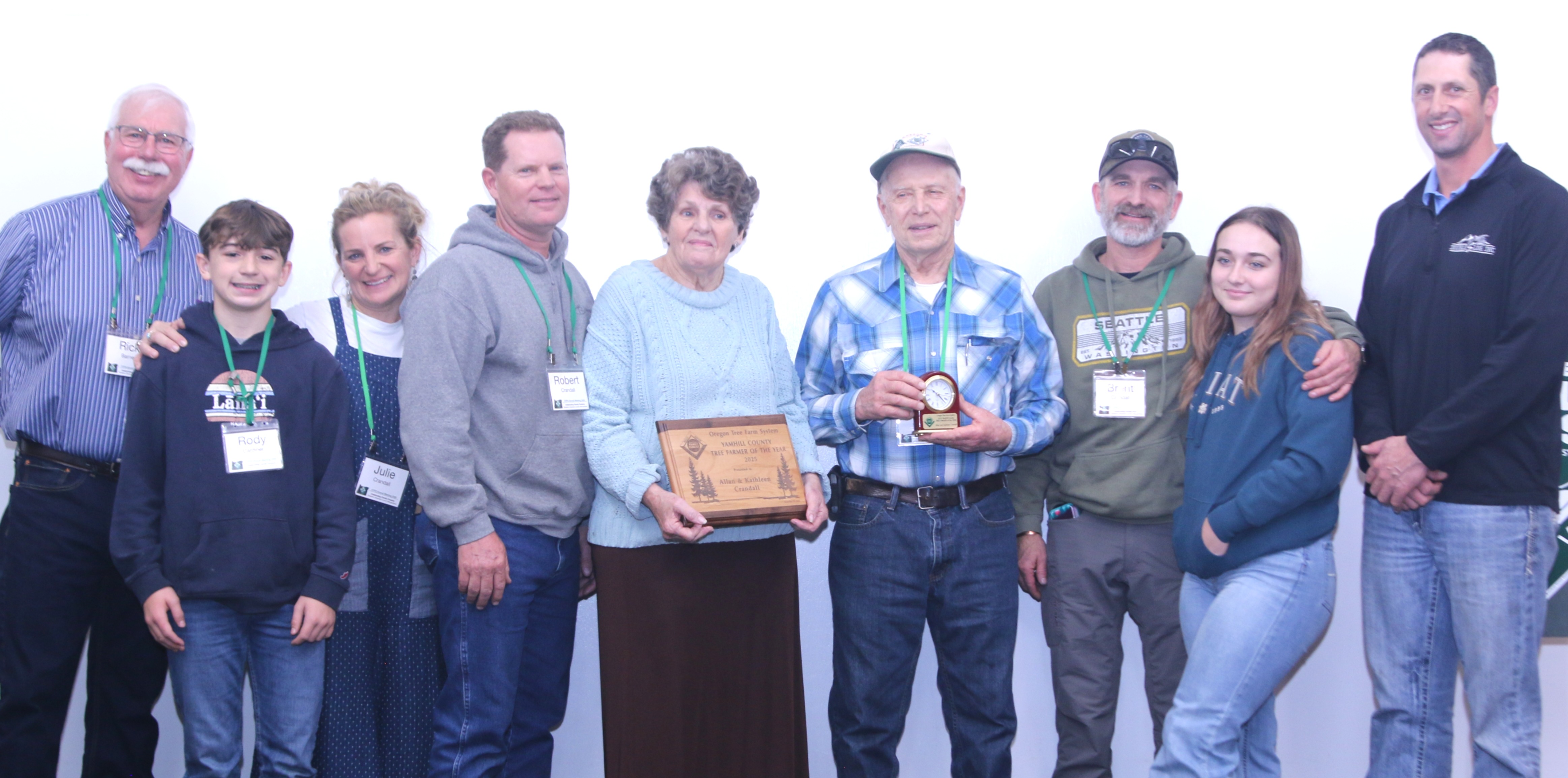Linn County Logging Firm RDL Northwest Earns Merit Award As Oregon Department Of Forestry Announces State’s Top Forest Operators For 2025 (Photo)
- 12/03/25
SALEM, Ore. – Two loggers and a forest road builder have been chosen as Operator of the Year for their respective region of Oregon. Three regional advisory committees to the Oregon Board of Forestry selected the trio earlier this fall. The recipients will be recognized in Salem at the January meeting of the Board. The honorees are:
- Northwest Oregon—Quality Excavation, Inc., out of Seaside, Ore.
- Southwest Oregon—Roseburg-based Weber Logging and Construction, Inc.
- Eastern Oregon—Boulder Ridge, LLC, headquartered in Bend, Ore.
The award recognizes forest operators who, while harvesting timber or doing other forestry work, have an excellent track record of protecting natural resources and improving forest health at a level that consistently meets or exceeds requirements of the Oregon Forest Practices Act *. That law requires people to manage forests responsibly and protect streams and water quality, protect and enhance habitat, and reduce landslide risks. The law also requires landowners to replant forests after harvesting.
Videos about each of the three Operators of the Year and five Merit Award winners can be viewed on the ODF website at https://www.oregon.gov/odf/Working/Pages/default.aspx
Rick Dennis of RDL Northwest, headquartered in Lebanon, Ore., was one of two logging companies which received the Merit Award for the Northwest Oregon Region. Dennis was honored for his careful planning of units to be logged. Nominators cited how he employs multiple logging methods and different types of machinery on steep units and consistently protects stream buffers and soils from disturbance.
The other Merit Award winner for Northwest Oregon is Emerald Valley Thinning based in Philomath, Ore. That firm earned the Merit Award for harvesting extremely steep slopes in the Coast Range using tethered logging and hand cutting to protect buffer trees along the Siuslaw River. They also succeeded in following new Forest Practice Act rules protecting trees in the harvest unit located in steep slope areas at risk of sliding.
Northwest Oregon Operator of the Year
ODF Stewardship Foresters Craig Sorter and Bryce Rodgers co-nominated Quality Excavation for Operator of the Year for the Northwest Oregon Region. Sorter said, “Small culverts installed in the first half of the 20th century before current rules were in place often blocked fish passage, preventing fish from spawning in upstream habitat. When landowner Lewis and Clark Timberlands wanted to log a parcel in the Coast Range, they knew they would need to upgrade the road to allow hauling and replace the old culvert beneath it. So their timber management company Nuveen called on the highly experienced firm of Quality Excavation.”
With an eye toward the future of the company, Quality Excavation’s founder Jay Bergeson entrusted the work of replacing the failing culvert on the North Fork of the Necanicum River in the Coast Range to his 28-year-old son Cole. Cole, who had been learning the business alongside his father from a young age, and a Quality Excavation crew, replaced the culvert with a massive new one. They then rebuilt the logging road over it to allow the landowner to harvest trees beyond that point.
Sorter said Quality Excavation had to divert the stream during the project through hundreds of yards of pipe, then dig out the old culvert, including old-growth logs that it had been placed atop. Cole then had to dig a new bed and place the larger, extra-long new culvert at an angle and level that would allow stream flow and fish passage through it. Then he anchored it in place with stone quarried on site, building the haul road back up to grade.
“Quality Excavation did an excellent job, even hiring a bobcat to lay a natural bed of rock in the pipe to make fish passage easier,” Sorter said. “No sediment got in the stream during the work and now fish are able to get to habitat upstream that was previously blocked.”
Watch a video about the company’s work at Northwest Oregon Operator of the Year for 2025, Winner - Quality Excavation, Inc.
Eastern Oregon
Landowner Shanda Asset Management nominated for Operator of the Year Boulder Ridge’s work thinning nearly 2,000 acres of overcrowded ponderosa pine and white fir on the eastern slopes of the Cascades. The selection committee agreed the work was exemplary and chose the firm as this year’s winner for Eastern Oregon.
“This harvest was a challenge because there wasn’t capacity at the one local mill to take all the harvested logs, so Boulder had to schedule 14 different trucks heading to Gilchrist, Sisters, Culver, Christmas Valley, and as far away as Roseburg,” said Aidan Myers, Director of Timber Operations for Shanda.
Besides reducing risk of catastrophic wildfire by reducing overcrowding, Myers also cited Boulder’s improving the health of the forest by carefully removing trees infested with dwarf mistletoe, which can kill or weaken trees, and which spreads more easily in crowded stands.
View a video of the company’s work at Eastern Oregon Operator of the Year for 2025, Winner - Boulder Ridge LLC - YouTube
Southwest Oregon
Austin Weber and his company Weber Logging and Construction were chosen as Operator of the Year for the Southwest Oregon Region for successfully working under new Forest Practices Act rules requiring him to protect a half dozen stands of trees in especially steep areas at risk of landslides. Leaving trees in those stands served various purposes, including protecting soils from erosion and downstream water from sediments. Trees left standing would also be available when they eventually fell over to deliver woody debris for future fish habitat. To do so, Weber had to set up multiple yarding sites and haul logs up to landings on the side of the road above the harvest unit.
Michael Williams of Roseburg Forest Products, who nominated Weber, said he also protected a fish-bearing stream in the unit, avoiding damage to trees in the stream buffer. Williams noted that Weber has for almost 20 years consistently excelled at protecting natural resources while harvesting in some of the most challenging situations in the region.
View video about Weber’s work at Southwest Oregon Operator of the Year for 2025, Winner - Weber Logging and Construction
ODF Forest Resources Division Chief Josh Barnard said, “the selection committees worked very hard this year when choosing these honors, given the high quality of the nominees.”
Barnard said nominees showed they could meet the challenge of working under new rules that came into effect this year. The updated Oregon Forest Practices Act rules provide more protection for forest resources, such as protecting trees and soil in especially steep areas at risk of sliding.
“Many of the harvest sites this year had quite challenging terrain,” said Barnard. “The Operators of the Year showed extraordinary care and diligence to protect slopes and streams, reduce risk of catastrophic wildfire, and improve forest health to meet landowner objectives. We’re proud to recognize those efforts.”
Merit Awards
Merit Awards were also given to three other companies.
Eastern Oregon
- Forestry consultant Jeff Maben earned the Merit Award for his work with private landowners in and around Grant County, helping them improve forest health by removing encroaching juniper and thinning of overcrowded ponderosa pine stands. His work increased water flow in local creeks, rejuvenated aspen groves, and reduced shade on mountain mahogany, an important source of winter browse for elk. It also reduced risk of catastrophic wildfire.
- Staton Forestry received the Merit Award for a thinning operation on the Gilchrist State Forest that included removing overcrowded lodgepole and ponderosa pine trees and brush to improve forest health by reducing drought stress among remaining trees, and improved habitat for deer and elk. It also protected neighboring communities by lowering the risk of catastrophic wildfire.
Southwest Oregon
- Dave Wilkerson Logging, LLC, based in Eagle Point, Ore. won the Merit Award for stopping work a number of times during an especially west spring to avoid rutting and soil damage. He was also commended for doing an excellent job protecting young trees in the mixed-aged stand on the western slopes of the Cascades. He also fully protected a fish-bearing stream bordering the harvest unit.
* Oregon enacted the Forest Practices Act in 1971 as a national model for forest management laws. The law focuses on ensuring responsible forest operations and protecting natural resources in forestland. The Act has been updated many times based on new scientific information and values to create a balanced approach to natural resource management.
# # #













